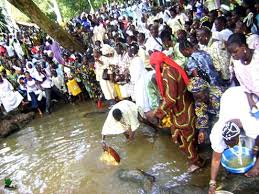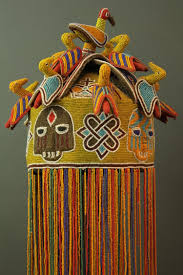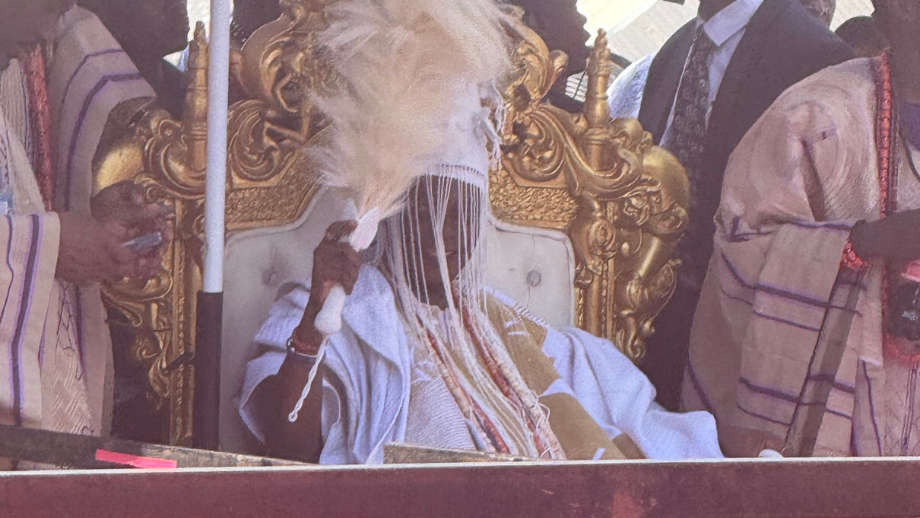Introduction
The Osun-Osogbo Festival, an ancient celebration rooted in Yoruba tradition, is one of the most revered cultural and spiritual festivals in Nigeria. Held annually in Osogbo, the festival is dedicated to Osun, the goddess of fertility, love, and prosperity. Central to the festival’s significance is the Osun River, regarded as the physical manifestation of the deity. This sacred water body is not only a natural landmark but also a divine presence that has shaped the lives, beliefs, and traditions of the Yoruba people for centuries.
The Sacred Origins of the Osun River
The Osun River holds a deep mythological and historical significance in Yoruba cosmology. According to oral traditions, the river is linked to Osun, one of the 400 Orisha deities recognized in Yoruba religion. Osun, once a powerful queen, transformed into a river after an encounter with male deities who refused to acknowledge the importance of women in governance and spiritual matters. It is believed that Osun, in her divine wisdom, merged with the river to continue guiding and protecting her people.
Historically, the Osun River was instrumental in the foundation of Osogbo in the 14th century. Larooye Gbadewolu, the first Ataoja (king) of Osogbo, alongside his trusted herbalist and spiritual guide, Timehin, settled near the river after experiencing a divine encounter. Oral tradition states that they were performing rituals when they heard a mystical voice warning them not to cut down trees around the river. Recognizing the divine presence, they pledged their allegiance to Osun and vowed to offer annual sacrifices. This covenant between the people of Osogbo and the river goddess marked the beginning of what is now the Osun-Osogbo Festival.
The Osun River in the Osun-Osogbo Festival
The Osun River is the focal point of the Osun-Osogbo Festival, and several rituals take place along its sacred banks. The festival, which lasts two weeks, includes the Iboriade Procession, where the crowns of past Ataojas are brought to the Osun Grove for blessings, and the grand Arugba Procession, in which a virgin girl, chosen from the royal lineage, carries a sacred calabash filled with offerings to the river.
One of the most anticipated moments of the festival is the final procession to the Osun River, where thousands of devotees, dressed in white, gather to offer prayers, sacrifices, and gifts. The festival’s high priest, known as the Aworo Osun, leads the rituals, invoking the presence of the goddess. Devotees seek healing, fertility, and protection by bathing in the river or taking its water home.

Key Figures and Contributions to the Preservation of the Osun River
Over the centuries, various individuals have played a critical role in preserving the Osun River and ensuring the continuity of the Osun-Osogbo Festival. One of the most notable figures is Susanne Wenger (1915–2009), an Austrian-born artist and priestess, who arrived in Osogbo in the 1950s. Wenger, also known as Adunni Olorisha, dedicated her life to the restoration of the Osun Sacred Grove, which had been threatened by deforestation and urban encroachment. She, along with the New Sacred Art Movement, revitalized the grove, creating sculptures and shrines that honor Osun and other deities.
In recognition of its historical and cultural significance, the Osun Sacred Grove was designated a UNESCO World Heritage Site in 2005, ensuring its protection for future generations. The Osun River remains central to this conservation effort, as its purity and sanctity are vital to the festival’s spiritual significance.
Statements from Early Actors
Several traditional leaders and scholars have spoken about the importance of the Osun River in the festival. Chief Ifayemi Elebuibon, a renowned Ifa priest and scholar, once stated:
“The Osun River is not just a body of water; it is the essence of Osun herself. Those who seek her favor must approach the river with reverence, for it is through her waters that we receive fertility, healing, and divine protection.”
Similarly, Oba Iyiola Oyewale Matanmi III, who served as Ataoja of Osogbo from 1976 to 2010, emphasized the river’s role in the unity and identity of the Osogbo people:
“As long as the Osun River flows, the spirit of Osun remains with us. The festival is a time for renewal, for both the land and its people. It is our sacred duty to honor this covenant.”
The Modern-Day Significance of the Osun River
Today, the Osun River continues to be a source of spiritual and cultural identity for the Yoruba people. However, it faces environmental threats such as pollution and deforestation. In response, local and international conservation groups have been working to protect the river and the surrounding grove. The Osun-Osogbo Festival Foundation and other advocacy groups continue to raise awareness about the need for sustainable environmental practices to preserve the river for future generations.
The river also attracts thousands of tourists and researchers interested in Yoruba religion, culture, and history. Its healing waters and spiritual aura continue to draw pilgrims from around the world, reinforcing its status as a sacred and revered site.
Conclusion
The Osun River is more than just a geographical feature; it is the living embodiment of a powerful deity, a historical landmark, and a cultural treasure. Its role in the Osun-Osogbo Festival underscores the deep spiritual connections between the Yoruba people and their environment. From ancient legends to modern conservation efforts, the river remains a source of faith, heritage, and identity. As devotees and visitors gather each year to celebrate the Osun-Osogbo Festival, the sacred waters of the Osun River continue to flow, carrying with them centuries of tradition, devotion, and renewal.






